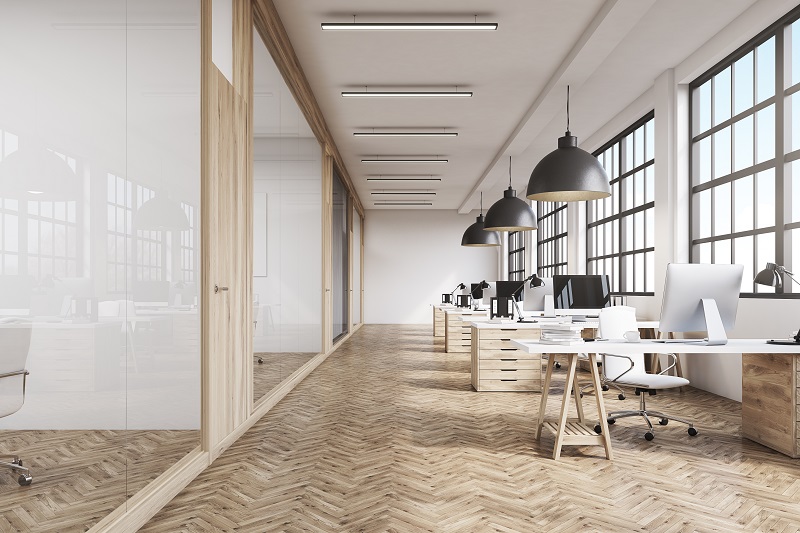All coworking spaces are not created equal. As the industry continues to grow at breakneck speeds, a wide range of offerings has hit the market and it’s important to make the best choice for your business.
So, we’ve compiled a list of the main types of coworking space to help you understand the market and what it has to offer:
Minimal spaces
If you want to get your head down and just need the basics for your working day, a minimal space is a solid choice. These coworking spaces house small communities with no frills, offering WiFi, a desk and coffee. As such, they are usually a quieter and cheaper option compared to larger spaces.
They are often run by a manager who is also a coworker and may want to reduce their office bills. The vibe of these places is highly dependent on the founders and many grow into conventional spaces as the community gets more established.
Conventional spaces
A conventional coworking space is highly generic in nature. It usually targets freelancers, remote workers and startups who need a place to set up shop and use on a flexible basis. These are the most popular sort of space. While they may vary in size, they are open to everyone and offer desks or offices to rent on a daily, weekly or monthly basis.
Conventional spaces differ from minimal spaces as they embrace and encourage the original coworking movement’s manifesto of community, collaboration, learning and sustainability. They are usually run by a dedicated community manager, who fosters this community with a range of events.
Niche spaces
Some spaces target a specific market to bring together industry-specific innovators. For example, The Food Loft in Boston focuses on the food and hospitality industry and Full Node in Berlin is a dedicated cryptocurrency coworking space.
Many niche spaces include mentorship and training schemes and you often need to apply to get a spot at such spaces. Competition can be fierce. For example, The Wing is a female-only space in NYC with an 8,000-strong waiting list. However, the city’s human rights commission is currently investigating the workspace to check it complies with local anti-discrimination laws.
High-end spaces
If you want to work in a beautiful and professionally designed interior with an extensive range of amenities, a high-end space is for you. Usually found in exclusive city locations, these spaces are large and may also target a niche market.
Such high-end spaces are run by a professional community team with a laser focus on helping their members’ businesses grow and succeed. Some may even run incubator programs and many offer mentorship schemes and extensive industry-wide networking opportunities. Several high-end spaces may also operate under the same brand. For example, Huckletree runs four spaces – three in London, one in Dublin – all with the company’s signature black and white branding.
Nomadic spaces
Nomadic spaces are now found in a range of increasingly diverse and unconventional locations. They often combine coworking with another service. Coffee shops are an obvious example, where you can buy a skinny latte and fire up your laptop for a few hours, making use of the ubiquitous WiFi and power supply.
While many may not regard their local Starbucks as a true coworking space, nomadic spaces are becoming more sophisticated in their approach. They’re also appearing in a greater range of locations, with restaurants, libraries and hotels now opening their doors to coworking during off-peak times. For example, Spacious in New York partners with the city’s restaurants to create workspaces when these eating establishments are closed.
Corporate spaces
Some established businesses are setting up their own coworking spaces to help them keep up with industry trends and collaborate with the startup community. As a result, the stakeholders of such spaces are not impartial but they do offer members access to their corporate network and infrastructure.
For example, Bosch opened its Platform 12 innovation hub on the top floor of its research campus near Stuttgart, Germany last year. One month later, Bosch extended its coworking offering and launched the IoT-focused Chicago Connectory space in partnership with tech and entrepreneurship center 1871.
Space-as-a-Service
Under this business model, a landlord outsources the creation and running of a coworking space to a space-as-a-service provider. WeWork is a dominant provider in the industry. The firm creates a coworking space, which typically has a footprint of around 25,000 to 40,000 square feet, in its cookie-cutter branding and design. There are also smaller operators, such as U.K.-based Bold, which can set up a coworking space of around 5,000 to 15,000 square feet and offers a design portfolio with several options.
Under the space-as-a-service model, the end result could be any one of the coworking spaces we’ve covered on this list. So, while this presents a low-hassle option for landlords who want a regular income, members will be none-the-wiser to what’s going on behind the scenes.










